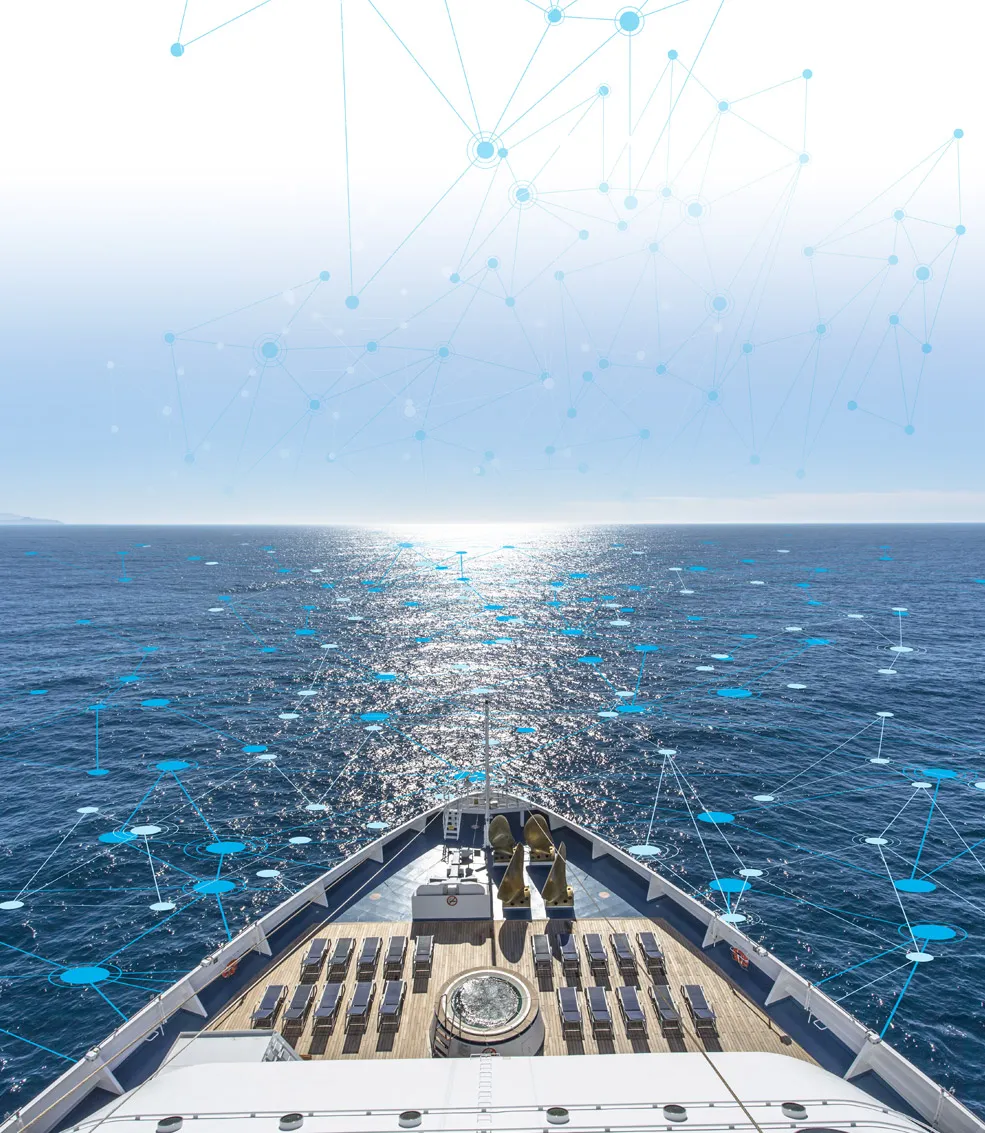Exploring automation
While nobody would ever consider letting a cruise ship operate without a bridge crew, autonomous shipping technology offers great enhancement potential for aspects such as navigation support, equipment monitoring and safety improvements.
“We began working on autonomy in 2014,” says Bjørn-Johan Vartdal, Head of DNV GL’s Maritime Research Group. “At that time there was no interest in the subject matter from the industry side. But that has changed dramatically within these four years.” This remarkable shift of focus will potentially impact not only the way ships are operated but also the work of DNV GL as a classification society – and safety on board.

Towards the thinking ship
Digital technology and big data are revolutionizing the world around us, from aviation to driverless cars and smart homes. When equipment monitoring sensors transmit their readings to a computer application for evaluation, action can be initiated as soon as an issue is detected. Cameras can let a ship “see” its environment, and the associated software can “learn” to recognize obstacles, weather and sea conditions, and make appropriate decisions or present crucial information to the bridge for decision support.
Situation awareness has been the subject of comprehensive research at DNV GL. While most of the staff on board a cruise ship is indispensable and cannot be replaced by digital technology, autonomous systems can enable a host of applications that reduce human effort, improve operational efficiency, and help avoid incidents caused by human error. “There are countless functions and processes on a cruise ship that lend themselves to automation or remote controlling,” Vartdal points out. “Consolidated ship and environmental data deliver key insights to the bridge even today. There is a direct evolutionary line from navigational decision support to so-called driver assistance systems that essentially take over navigation with the captain just overseeing the process. That is a vision we want to make a reality.”

Protecting passengers
An area where sensor-based digital systems can truly make a difference is safety. “Many shipping incidents are related to the crew being inattentive,” says Vartdal. “Automated systems raise the crew’s awareness and help avoid accidents when a critical situation is detected. These technologies are especially important for cruise ships because of the many human lives on board. They can prevent the officer of the deck from falling asleep, or recognize when another ship is on the radar that might cause a collision, and alert the crew, change the course, contact the other vessel, etc.” To qualify for real-life use, such systems need to be “taught” using large amounts of data from ship operators. “We encourage system developers and shipping companies to cooperate to build up this database,” says Vartdal. “Basic situation awareness systems could be ready for deployment in three to five years.” DNV GL supports these pioneering initiatives and is involved in various trials, he adds.

Class ensures system reliability
In fact, DNV GL is prioritizing the decision support and driver assistance topics in the development of class rules. “We hope to have some rules ready by the end of this year,” says Vartdal. “Our job is to make sure these devices are safe. Our requirements will define what constitutes adequate awareness, and what specific conditions ships must meet. We work very closely with system manufacturers. It is crucial that we deeply understand the limitations of these systems.”
Class and shipowners can benefit from “autonomous” technology in other ways as well: “Several of our projects focus on what we call ‘sensor-based class,” describes Vartdal. “Comprehensive condition monitoring can deliver a more qualified view of an entire ship’s state. We want to build classification services that use this information to identify risk areas on board and focus surveys on these issues, rather than just performing the traditional scheduled survey that only gives us a snapshot of the vessel’s condition at one point in time.”
One of those projects is specifically geared towards cruise ships. “Together with Kongsberg and RCL, we are exploring an approach we call dynamic barrier management,” says Vartdal. While conventional barrier management periodically inspects barriers designed to prevent damaging events or limit their consequences, this approach uses sensor information to determine the condition of the barriers continuously in real time, and determine whether they need to be inspected or repaired. “This approach will enable a needs- and risk-based survey regime that achieves better results in less time,” says Vartdal. “It will improve safety by identifying potential hazards in a continuous process.”
As a stepping stone towards this real-time monitoring environment, DNV GL has created its open platform Veracity, an online exchange hub providing access to all digital services – including third-party services – and applications as well as shared data, all in a controlled, secure environment. In another project, DNV GL and several industry partners are developing an open simulation platform for the maritime industry that facilitates the creation of “digital twins” of vessels by combining all the individual component simulation models into a comprehensive virtualisation of the entire ship. “A digital twin is a great tool for optimizing hull forms, power systems, vibration performance and fuel efficiency of a cruise ship before it is built,” describes Vartdal. Furthermore it can help class handle system complexity or be used for diagnostics and investigating the causes of incidents. “The digital twin integrates all the knowledge inherent in a ship. It can streamline ship design, cut the operating costs and enable safer ship operation.”
Contact us

